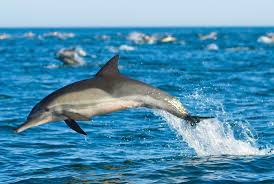Whale Shark Season in La Paz is here and we’re off to an exciting start! Between October and April every year these amazing gentle giants return to the Sea of Cortez after many months of migration.
The Whale Shark is indeed a shark, but don’t worry, it doesn’t want to eat you or me. Like a whale, they are filter feeders, and find their way back to the Sea of Cortez to fatten up in the plankton and krill rich waters. Commonly known as the Gulf of California, the Sea of Cortez stretches 700 miles, although the gentle giants are known to only feed near the middle of the spit of land that extends out in front of La Paz, known as the Magote. Topography shows a drop off in the Magote changing the depth from 6-10 feet in the shallows to a quick drop of 22-33 feet. The currents caused by this shelf in the ocean floor results in the common ocean phenomenon called plankton blooms, which are large concentrations of phytoplankton, microscopic plants that float in the upper, sunlit layers of the water. And for the whale shark, this means dinner time.

Whale sharks are the largest known species of fish, growing up to 41.5’ (the largest on record), and weighing in at about 40 tons. The whale sharks found in Baja are typically considered teenagers, about 20-30 years old, and 25-30 feet long. To put that in perspective, consider these teens are the length of a small school bus with mouths as wide as a car.
Unlike an actual whale, the whale shark does not breach for air, which can make it difficult to locate initially, but unusual wave breaks, a large dorsal fin, and the enlarged darkened mass gliding through the waters are easy giveaways. Once the massive white-spotted fish - usually found in schools of three to five, has been located, divers should be prepared to jump in the water. Depending on whether the shark is eating vertically or as it moves, a brisk swim may be necessary.
Once plentiful in the oceans of the world, the whale sharks are considered an endangered species and receive staunch protection under international and Mexican law. While it is legal to swim with them as they feed, strict rules are enforced. With three feeding zones in the area, only a limited number of boats can be in each zone at one time, and up to six guests with a snorkel instructor may be in the water surrounding one of the giants, keeping a distance of at least six feet. No SCUBA diving gear is permitted in the feeding areas.
Don’t forget: you present far more danger to the fish than the fish does to you. Lotions or sunscreens can can create a life-threatening infection on their slick sensitive skin so it is imperative not to touch them. As they move slowly and docilely nearby, it may be difficult to resist this urge, but it’s important to do our part in keeping their numbers from declining.
Join us on an amazing adventure with this incredible fish. For more information, check out http://www.bajawhaleshark.com/.
0 Comments